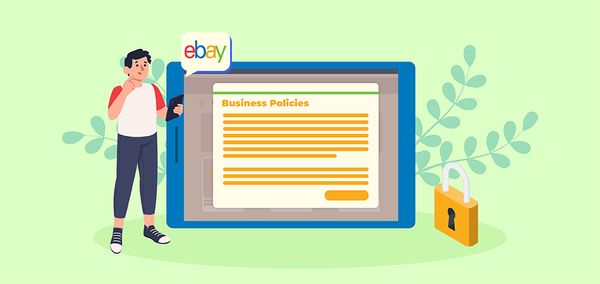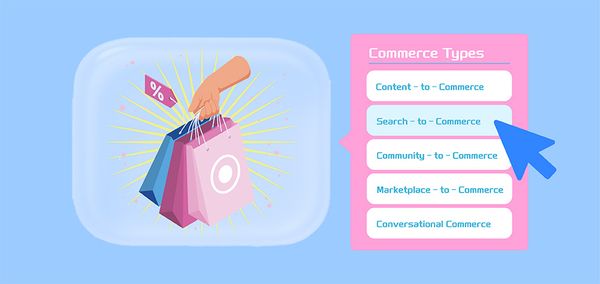What Is an Online Shopping Cart?

Shopping cart software is the engine that powers an online business, allowing you to simply manage inventory, add or delete goods, compute taxes, and do anything else necessary to run a website and fulfil orders.
However, many online shopping carts do considerably more, such as:
- Allow clients to enter promo codes and special discounts or have them applied automatically based on their loyalty level.
- Check out various payment methods and payment structures (for example, subscription, 'purchase now, pay later,' and so on).
- Collect and transfer relevant customer data to other corporate systems (accounting, CRM, email marketing, and more) while assisting with GDPR compliance.
Shopping cart software may simplify complicated operations in a user-friendly interface, allowing even non-technical persons to manage a whole ecommerce organisation.
Different Kinds of Shopping Cart Software
Nowadays, the providers offer a wide range of capabilities, and each shopping cart software choice has unique features and usefulness. Web hosting is one of the key distinctions between shopping cart software kinds – in other words, how and where your store is hosted. This will significantly influence how your online business is set up, administered, and maintained in the long run.
There are mainly two types of shopping cart software:
Hosted shopping carts
As the name suggests, hosted shopping carts are owned, managed, and upgraded by an ecommerce company (think software-as-a-service or SaaS). For an annual or monthly price, you have access to all of the vendor's main commerce tools and hosting for your site, bandwidth, managed security, and ongoing software upgrades.
| Get Started Now to Grow Your Online Business with the Best AliExpress Dropshipping Tool - DSers! |
SaaS solutions provide an excellent blend of flexibility and usability. You don't have to spend months building all of the functionality you require. In addition, hosted shopping cart software has advanced to the point that customization and flexibility formerly available only on-premise are now available, making it more than enough for most online companies.
Some of the most well-known suppliers of hosted ecommerce shopping carts are:
Self-Hosted Shopping Carts
Self-hosted or open-source shopping carts need merchants hosting their site or using hosting provided by your platform supplier. It will also need more hands-on development experience. Such carts, which are frequently released for free as open-source software, provide an essential degree of checkout functionality. Extra features and system connections will have to be created or acquired as a third-party subscription.
When it comes to the complete shopping experience, self-hosting an ecommerce site with open source software allows you nearly endless options. However, it necessitates more time focused on technical rather than operational parts of your ecommerce organisation.
Purpose of Shopping Cart Software
The capacity to make transactions is obviously required if you want to launch an ecommerce firm. In the early days of ecommerce, developers had to create custom software for each shop. Now, an extensive range of software types serves to enable safe online transactions, with a diverse set of capabilities and features — even plugins that may add commerce capability to an existing website.
You may additionally require the following additional functionalities from your shopping cart solution:
Facilitated Marketing
Built-in SEO and simple optimization enable online retailers to rank better in organic search results, increasing discovery and lowering customer acquisition expenses.
Automated Facility for Shipping & Taxes
Some shopping cart software features include printing shipping labels, calculating sales taxes depending on customer location, and sending customer notification emails.
Superb Product Management
This includes SKUs (Stock Keeping Units) and variants (size, color, and number) as well as product names and photographs, enabling an online store manager to receive a high-level perspective or delve down to the minutiae without any technical knowledge.
Manage Orders of Customer
Managing an order from start to finish is critical to the success of any organisation. You may use shopping cart software to filter by customer, check order progress, and make adjustments on the fly. Integrations with email platforms offer an additional channel for managing consumer relations.
Best Integrated Back-end Systems
If you also have a physical store, you may connect data from your point-of-sale systems and online storefront to get a complete picture of your clients' purchasing habits and inventory in real-time. Use the results to increase loyalty and customise your marketing.
Maintain Your Compliance
Maintain neatly stacked financial data for audits and prevent compliance risks linked with non-secure payment processing or data abuse following requirements such as GDPR (General Data Protection Regulation).
Enable More Features
Aside from checkout, most solutions provide both native and third-party capabilities such as cart abandonment recovery (native with BigCommerce), discounts, and a variety of pre-built and bespoke connectors with other company systems (CRM, shipping and logistics providers, on-demand manufacturing).
Way to Choose An Appropriate Shopping Cart Software
Now that you know what a reliable shopping cart software looks like, let's talk about your specific company requirements. How can you identify a solution that helps, not inhibits, your growth? Here are five methods to assist you in determining this.
Determine Site's Objectives
The decision to sell online is the most significant. That is why it is impossible to proceed with action until you have determined and practical critical operational bells and whistles.
To begin with, ask yourself why you are going to start it. What drove you to sell online? If the answer is to grab more customers and boost the business's productivity, it would be pretty easy. Here are the crucial points you need to remember to make it real. So let's have a look:
- Will you utilise ecommerce to sell directly to consumers?
- Do you wish to increase internet traffic to augment your offline operations?
Hence, it was all about the baseline goals. Now, let's know the ecommerce metrics:
- What criteria have you decided to measure the growth?
- What profit are you expecting from weekly sales?
- Are you planning to sell locally or want to spread it to the international level as well?
- What path have you opted to grow a customer's lifetime value?
- What quantity of products have you decided to sell at first?
Select the Feature You Need
So, as you have decided and are very clear with your goals, now, you need to analyze your eCommerce website's requirements and create a list of features that it needs. Do not forget your customer's lifecycle while making a list. For example, suppose you are handling a small business.
In that case, you can simply skip the support of numerous currencies, whereas, if you are doing cross-border business, the feature becomes essential to implement. Furthermore, it may demand a whopping amount of money, so it would be helpful to know what is crucial to avoid spending recklessly.
Here we have narrowed down the points to let you decide what shopping cart feature you need:
- Start by creating a general list filled with must-have features.
- Then, alter it by adding extras depending upon your business, for instance, automatic sales tax/shipping rate calculation that will help you save much time and reduce the requirement of keeping records manually.
- Here, arrange them according to the number from 1 to 5. It is precise that 1 represents the crucial feature for boosting the revenues while 5 is a handy add-on that could be efficient for regular operations.
Examine the Usability
Checkout is an important stage in the conversion process. Around ninety-one percent of shopping carts are abandoned for one reason; your objective should be to reduce as much friction as possible. Is the solution you're considering user-friendly? Baymard Institute conducts periodic evaluations of ecommerce UX checkout and emphasizes the necessity of adhering to the following best practices:
- Make a visible "Guest Checkout" option available.
- A comparison of shipping choices should be accessible.
- Allow users to update data during the order review process immediately.
- All optional and compulsory fields must be specified explicitly.
Use these points to determine how well your top selections performed. Check if you can change the checkout settings and microcopy to reduce cart abandonment rates.
Timely Review Adaptable Customer Support
Having a support staff nearby is helpful since you will encounter a query that neither you nor your team can answer. However, if a significant component of your ecommerce site fails, the last thing your staff wants to do is sift through pages of technical documentation in search of answers.
BigCommerce, on the other hand – a SaaS solution — provides 24/7 technical assistance and responds quickly to crucial situations. BigCommerce, for example, responds to inquiries in an average of 2 minutes and resolves 85 percent of customer queries on the first contact.
However, not all providers provide quick response times and different support channels. Check out how each one compares.
Bottom Line
It has been proved that one can not decide on a specific size that perfectly fits all shopping cart software options out there. With that being said, some cart software selections are available that come with the best features and cost.
However, the most suitable platform that you should choose utterly depends on the path you have opted to run your business and what your online store demands to support.
Likewise, if you want professional industry support, then without further ado, connect with Dsers, the most proper place to inquire about the related services. Get the most exceptional tool to rectify any of your eCommerce problems quickly. So, make it easy with the help of experts and enjoy your online selling journey.













 Company
Company
 Why Choose DSers
Why Choose DSers
 Blog
Blog
 Help Center
Help Center




 Live Chat
Live Chat